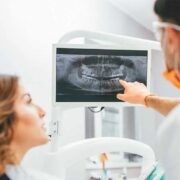
When it comes to dental health, prevention is key. Early dental problem detection can spare patients from painful procedures and prolonged care. Dental X-rays are one of the most important diagnostic techniques used at dental practice in Lincoln, NE that dentists have at their disposal for spotting cavities in their early stages. This article, especially in light of Lincoln, discusses the value of using dental X-rays to identify cavities and describes the procedure.
The Value of Early Cavity Identification
Cavities, sometimes referred to as dental caries or tooth decay, are a common oral health problem worldwide. They are caused by a confluence of elements such as food habits, bacterial activity, and inadequate dental hygiene. Cavities can worsen and cause discomfort, infection, and even tooth loss if they are not treated. However, when detected early, interventions can be minimally invasive, preserving tooth structure and preventing further damage.
Process of Using Dental X-Rays for Cavity Detection:
In Lincoln, as in many other places, the process of using dental X-rays for cavity detection follows a standardized yet personalized approach. It typically involves the following steps:
- Consultation and Examination: The dental appointment begins with a consultation where the patient discusses any concerns or symptoms with the dentist. Following this, a comprehensive oral examination is conducted.
- X-ray Imaging: Based on the examination findings and the patient’s dental history, the dentist may recommend X-ray imaging. Different types of X-rays may be utilized, including bitewing X-rays for detecting cavities between teeth and periapical X-rays for examining specific teeth and surrounding bone structure.
- Analysis and Diagnosis: Once the X-ray images are captured, the dentist carefully analyzes them for signs of cavities, such as demineralization or dark spots on the enamel. This analysis is complemented by the visual examination findings to formulate an accurate diagnosis.
- Treatment Planning: If cavities are found, the patient and the dentist discuss available treatments. Treatment options vary depending on the location and severity of the cavities. For early-stage cavities, basic therapies like fluoride therapy or dental sealants may be necessary, while more complex procedures like fillings or root canal therapy may be necessary for advanced instances.
Maintaining good oral health and averting more serious dental issues need early cavity diagnosis. In this sense, dental X-rays are quite helpful since they allow dentists to detect cavities early on when treatments can be more conservative and successful. Similar to other places, Lincoln’s community benefits from improved oral health outcomes due to the early detection of cavities made possible by the routine inclusion of dental X-rays in dental care.








